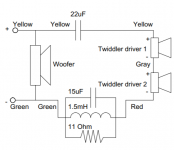Twiddlers indeed! 😀
I'd guess that parallel LCR is an attempt to correct the Fs resonance that tweeters always have, this being a Morel CAT 378. The bass can be run filterless.
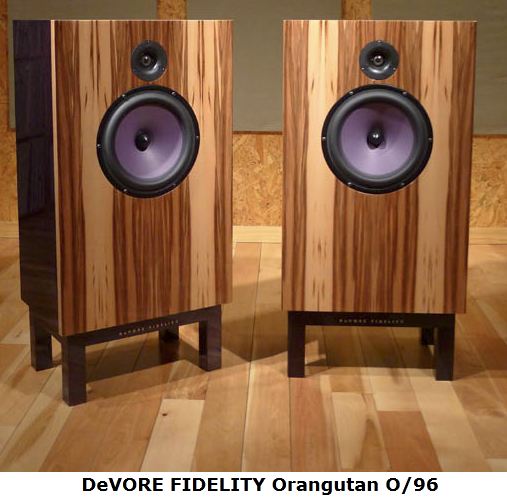
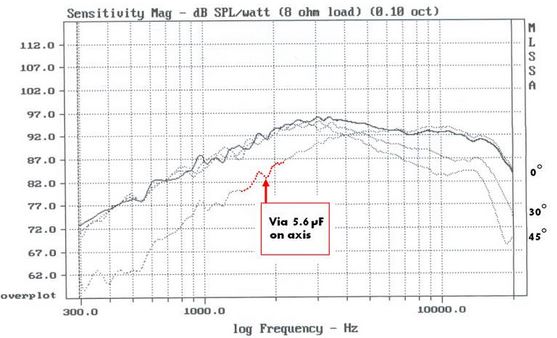
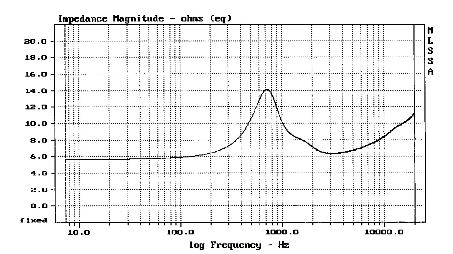
I decided a conventional series LCR might do about the right things:
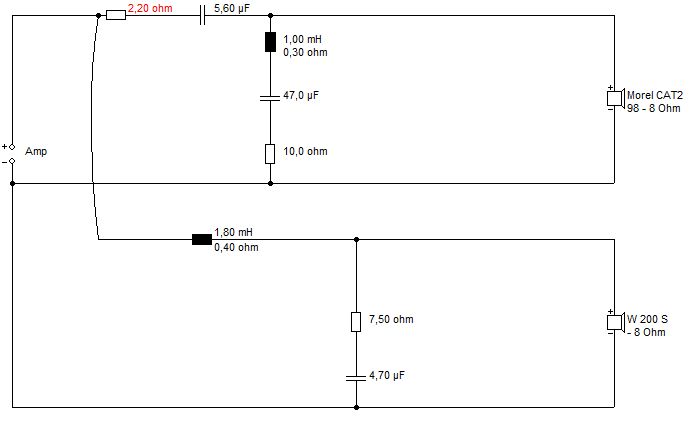
Your circuit might work, IDK really without simming it. That 22uF is a whopper. Software | Visaton
I suppose the LCR might be some frequency response correction (a dip) on fullrange drivers too. See, ask a vague question, and you get a vague response!
I'd guess that parallel LCR is an attempt to correct the Fs resonance that tweeters always have, this being a Morel CAT 378. The bass can be run filterless.
I decided a conventional series LCR might do about the right things:
Your circuit might work, IDK really without simming it. That 22uF is a whopper. Software | Visaton
I suppose the LCR might be some frequency response correction (a dip) on fullrange drivers too. See, ask a vague question, and you get a vague response!
Last edited:
It looks Bose, correct me if I'm wrong. A couple of small full range drivers there in series. One capacitor to cut the lows. One tank circuit to tame a nasty bit. No crossing for the woofer, except for its natural inability to produce treble.
It is Bose, maybe I should have asked the question differently. I was trying to find out if it is a 1st, 2nd, 3rd or 4th order crossover, its slope and if it was a Butterworth, Linkwitz-Riley or Bessel crossover. I don't understand how to interpret the schematics to work out the above information and was hoping someone may be able to help me with it.
There is no electrical crossover on the woofer and the electrical crossover on the 'tweeters' is first order (6dB/octave).
The circuit is not complicated enough to be one of the designs to which you refer.
The circuit is not complicated enough to be one of the designs to which you refer.
Last edited:
The bandstop filter is interesting being at 1kHz. and maybe 5dB. This is a driver used for treble. Maybe it does a baffle and pseudo treble lift operation in one.
You can find some basic information on crossovers and slopes here. Passive Crossover Slopes
It's a good starting point before you plunge into the deep end with the Linkwitz-Rileys!
It's a good starting point before you plunge into the deep end with the Linkwitz-Rileys!
It is Bose, maybe I should have asked the question differently. I was trying to find out if it is a 1st, 2nd, 3rd or 4th order crossover, its slope and if it was a Butterworth, Linkwitz-Riley or Bessel crossover. I don't understand how to interpret the schematics to work out the above information and was hoping someone may be able to help me with it.
First order high-pass on the tweeters (using that term loosely - 22uF is a fairly high capacitor value, so I'm expecting a couple of 2" full-range drivers there). The LF driver is being run without a filter.
The LCR is a notch filter. At low frequencies, it presents a short-circuit: current is diverted through the inductor. At high frequencies, it's also short: current goes through the capacitor. At some middle frequency (analysis of the values will reveal what frequency that might be), the current passes through the resistor.
Result: a dip in the frequency response, probably to compensate for something the tweeters are doing.
Chris
- Home
- Loudspeakers
- Multi-Way
- Help identifying type of crossover
